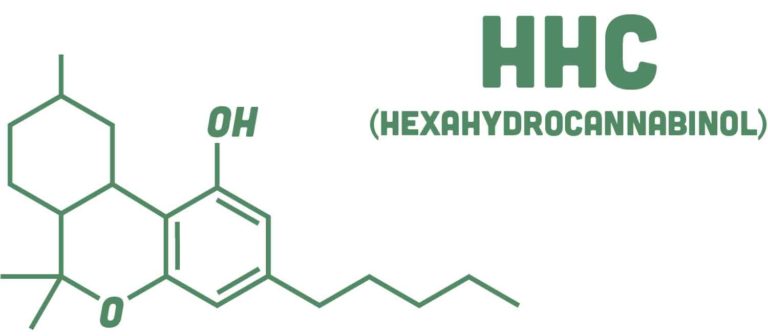
When the Farm Bill became law in 2018, hemp became legal across the country. With that, research has become more readily available. Thus, discoveries are made practically daily. Enter Hexahydrocannabinol, or HHC. This cannabinoid is found in small amounts in the seeds and pollen of hemp. Because it’s so new, there hasn’t been much research, but scientists have discovered a few things about HHC that makes it unique from other established cannabinoids, like CBD and THC.
HHC
HHC is a cannabinoid similar to Delta 8. While it is found naturally within the hemp plant, it is found in very small amounts. This means it needs to be made in a lab by skilled chemists for a sizable amount to place in products or to test scientifically. However, HHC doesn’t contain THC. Therefore, at no point in the process does the product go over 0.3 percent Delta 9. There is no conflict between HHC and the Farm Bill.
Looking at the structure of HHC, there are no double bonds found in the chemical structure. The cannabinoid goes through a process called hydrogenation. This process floods the chemical structure with hydrogen. Hydrogen breaks down the double bonds and adds hydrogen to the structure itself. With the extra hydrogen atoms, HHC becomes more stable. It has a longer shelf life and is less likely to break down and lose its potency.
CB Receptors
Through the limited testing HHC has gone through, it has been shown to have a high bonding affinity for both CB1 and CB2, which are receptors in the human endocannabinoid system. CB1 is most commonly found in the central nervous system. CB2 receptors are more typically found in the peripheral nervous system.
While HHC can bond with both receptors, there are three different forms HHC can take. It all depends on which of the three chiral centers HHC bonds to. A chiral center of an atom is the central carbon atom with four different chemical bonds attached to it.
If HHC bonds to the first chiral center, the cannabinoid will activate the CB1 receptor. If HHC bonds to the second chiral center, the CB2 receptor will activate. Finally, if HHC bonds to the third and final chiral center, both receptors are activated. This has led scientists to believe that HHC could potentially treat two conditions at once. HHC could help the immune system and the central nervous system.
Similarities
Even though structurally different, HHC and THC act similarly to each other. Both offer a euphoric feeling, are said to help with pain relief, and help with nausea and vomiting.
All of the potential benefits of HHC include:
- Help manage chronic pain
- Reduce Inflammation
- Promote deeper, more restorative sleep
- Alleviate nausea or vomiting
- Calm anxiety – This may cause the opposite effect in certain people and increase their anxiousness.
These all may seem similar to THC. One way to think of HHC is margarine, compared to THC as butter. They’re similar, but also different enough to be classified as their own with their own benefits.
While there isn’t much known about HHC, there is potential for it. Hemp companies have begun selling HHC products. Make sure to look into what research there is before purchasing. The cannabinoid HHC is reported to be more potent than Delta 8, but less potent than Delta 9. It’s a more comfortable medium for those wanting a little more than Delta 8 offers but not as much as cannabis itself.
Make sure to check back for more cannabis and hemp related news.